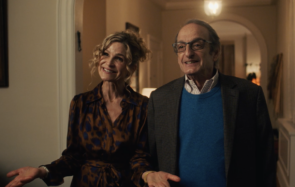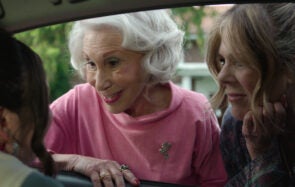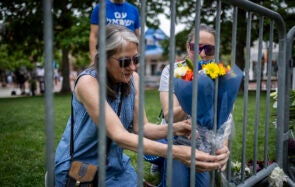It’s an annual ritual that is different from all others. We could be at a luxury spa awaiting our massages, the five or six women sitting in white cotton robes tied tightly at the waist. But we don’t touch the coffee or the water cooler, don’t glance at the magazines. We don’t make eye contact and we definitely don’t speak to one another.
In what other sort of doctor’s waiting room are all the people there for the same reason? The annual mammogram is not an invasive procedure, at least not physically. Psychologically, it’s a different story. And of course, although we are all there for the identical diagnostic test, we are not the same. Some will be there to check for a recurrence, others will have a family history, or a genetic predisposition because of the part of Eastern Europe where her grandparents were born. Some of us will have come to get a routine check, diligently showing up every twelve months, feeling a false confidence that our punctual maintenance will protect us. And others will have avoided coming for two, three, four years, maybe more, in the equally false hope that ignorance is bliss.
One by one we are called by the technician, invariably, in my experience, a kind, and gentle woman who, despite a smile, is all business. When I leave my house in the morning for the appointment, anxious, my husband tells me he wishes I didn’t have to go through this pain. I tell him, truthfully, that it isn’t painful – just oddly uncomfortable, like putting a delicate part of your anatomy into a vice for a moment. The physical discomfort is only part of it though. As professional as the tech is, there is something distressing about the way she pulls and pushes at my breasts, turning my torso, positioning my arms and head, before the paddle comes down to flatten me. I have an urge to yell, “Stop! This is insane!” but of course, I turn this way and that, hold my breath when directed to do so, and cooperate to speed the process.
And then the most surreal part begins. When we return to the waiting room, we wait for results with a group of strangers who are somehow no longer as unknown to us now. Over the next fifteen minutes or so, we will first focus on our cell phones, answer a few emails, check our Facebook. But after exhausting that distraction, we will take furtive glances at one another, the temptation to make some marginal human contact almost overwhelming in the moments that must pass before we know if we are well or we are not.
A quick scan around the room reveals one much older woman, and I wonder whether I’ll be quite that good about preventative care when I reach her age. Another woman is demonstrably nervous, about this or something else entirely, I have no idea. But she taps her foot and she wrings her hands, and her anxiety is infectious. Next to her is a Chinese woman who does not speak English; it’s likely her first screening mammogram. She has brought her daughter, a lovely looking girl proudly wearing a Dartmouth sweatshirt, to translate for her. They both look scared, as though they would like to be anywhere but here. And how do I look to them? I’m calm – I have no basis to believe this will not go well. Although a paternal aunt had breast cancer at just my age so many years ago, she didn’t carry the gene that would put me at greater risk. I put my faith in that scientific fact, although well aware that is hardly foolproof.
So we sit and wait to be called out, one by one, into the hallway. Privacy regulations seem to hold little sway here, as the technician calls us each by name before we accompany her, and the news, albeit in hushed tones, can be heard by all. We each hope to be handed the letter – a folded over piece of paper that grants us a reprieve for twelve months and sends us hurriedly out the door. Inevitably, someone will be called in for more pictures. The first time I went for a mammogram at age 40, I was called in twice more for further x-rays, the panic slowly rising, before being directed to get a sonogram several days later. Luckily, the culprit turned out to be the pervasive but benign “dense breasts.” At these visits, I have yet to overhear a woman get news that the reviewing radiologist has seen something definitively sinister. I wonder, is there another room for that?
Handed my folded letter, I am flooded with relief. I take a moment to say a silent prayer that all of the women sitting with me will have the same result. But I know, although it may be true for those women in the room with me for the thirty minutes I am there today, my good thoughts can’t protect all the women that will pass through this room.
I take comfort in the thought that these women, and all the others, are taking care of themselves by getting mammograms, and that those who need further treatment will find out in time for it to make a difference. But if there were a way to ditch this annual ritual, I’d be the first in line.







